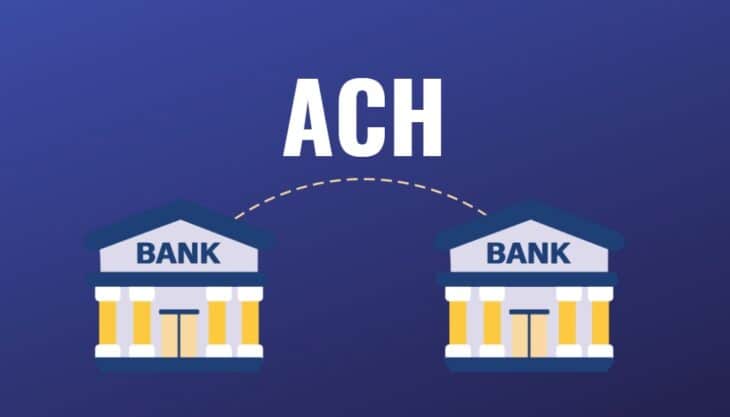Effective cash flow management is the lifeblood of any thriving business. With the ever-increasing pace of modern commerce, businesses need reliable, efficient, and secure payment methods to ensure their financial operations run smoothly.
One such method that has gained prominence is ACH (Automated Clearing House) payments. This system provides businesses with a way to electronically transfer funds between bank accounts, reducing the reliance on traditional, slower, and more error-prone payment methods like paper checks.
By integrating ACH payments into your financial processes, you can significantly enhance your business’s cash flow, streamline operations, and bolster your overall financial health.
This article will explore the specifics of how ACH payments can transform your cash flow management, examining their benefits and the practical steps your business can take to implement them effectively.
These Are the Main Benefits of Using ACH Payments For Your Business Cash Flow
| 1 | Faster Payment Processing |
| 2 | Lower Transaction Costs |
| 3 | Enhanced Security |
| 4 | Improved Cash Flow Forecasting |
| 5 | Reduced Administrative Burden |
| 6 | Better Customer Experience |
| 7 | Easy Integration with Accounting Systems |
| 8 | Automated Recurring Payments |
| 9 | Real-Time Payment Tracking |
| 10 | Greater Flexibility in Payment Scheduling |
| 11 | Increased Reliability and Consistency |
| 12 | Minimized Errors and Disputes |
| 13 | Enhanced Financial Control |
| 14 | Eco-Friendly Payment Solution |
| 15 | Boosted Business Efficiency and Growth |
1. Faster Payment Processing

| Key Data | Details |
|---|---|
| Speed of Transactions | ACH payments typically settle within 1-2 business days, compared to 5-7 days for paper checks. |
| Reliability | ACH payments reduce the risk of delays due to mail or check processing issues. |
| Impact on Cash Flow | Faster payments mean quicker access to funds, improving liquidity and financial stability. |
| Efficiency | Streamlined processes eliminate the need for manual handling, speeding up the entire payment cycle. |
Speed of Transactions
ACH payments are processed much faster than traditional payment methods like paper checks. Transactions usually settle within one to two business days, providing businesses with quicker access to their funds. This speed is crucial for maintaining a steady cash flow, allowing businesses to meet their financial obligations promptly and take advantage of new opportunities as they arise.
Reliability
The reliability of ACH payments is significantly higher than that of paper checks. Since ACH payments are electronic, they are not subject to delays caused by mail delivery issues or manual processing errors. This reliability ensures that payments are received and cleared on time, reducing uncertainty and enhancing financial planning.
Impact on Cash Flow
Faster payment processing directly impacts a business’s cash flow. With ACH payments, businesses can receive their money sooner, which improves liquidity and financial stability. This enhanced cash flow allows businesses to cover expenses, invest in growth opportunities, and maintain a buffer for unexpected costs.
Efficiency
ACH payments streamline the payment process by eliminating the need for manual tasks such as printing, signing, and mailing checks. This efficiency not only speeds up the payment cycle but also reduces administrative costs and the potential for human error. By automating payments, businesses can allocate resources to more strategic activities, driving overall growth and success.
2. Lower Transaction Costs
| Key Data | Details |
|---|---|
| Cost Savings | ACH payments reduce costs associated with paper checks, such as printing, mailing, and handling fees. |
| Transaction Fees | ACH transaction fees are generally lower than those for credit cards or wire transfers. |
| Administrative Savings | Lower administrative costs due to reduced manual processing and error handling. |
| Overall Financial Impact | Cost savings contribute to improved profitability and more efficient allocation of financial resources. |
Cost Savings
ACH payments significantly reduce the costs associated with traditional payment methods. Businesses save on expenses related to printing, mailing, and handling paper checks. These savings can be substantial, especially for businesses that process a large volume of transactions. Lower transaction costs mean more funds are available for other critical business needs, contributing to overall financial health.
Transaction Fees
The fees for ACH transactions are generally much lower than those for credit card transactions or wire transfers. While credit card fees can range from 2% to 3% per transaction, ACH fees are typically a flat rate, often just a few cents per transaction. This cost-effectiveness makes ACH payments an attractive option for businesses looking to minimize expenses and maximize their bottom line.
Administrative Savings
By reducing the need for manual processing and error handling, ACH payments lower administrative costs. Businesses no longer have to spend time and resources on tasks such as check reconciliation, tracking payments, or resolving payment disputes. This efficiency allows businesses to allocate their administrative resources more effectively, focusing on strategic activities that drive growth and innovation.
Overall Financial Impact
The combined cost savings from lower transaction fees and reduced administrative expenses have a positive impact on a business’s overall financial health. These savings can be reinvested in the business, used to improve cash flow, or allocated towards other operational needs. By minimizing transaction costs, businesses can improve profitability and ensure more efficient use of their financial resources.
3. Enhanced Security

| Key Data | Details |
|---|---|
| Fraud Reduction | ACH payments utilize encryption and authentication protocols, reducing the risk of fraud. |
| Data Protection | Sensitive financial information is safeguarded through rigorous security measures. |
| Transaction Integrity | The integrity of transactions is maintained through secure processing and verification methods. |
| Customer Trust | Enhanced security fosters trust and confidence among customers and business partners. |
Fraud Reduction
ACH payments are designed to reduce the risk of fraud through the use of advanced encryption and authentication protocols. These security measures ensure that only authorized parties can access and process payment information, minimizing the chances of unauthorized transactions. This high level of security is essential for protecting both businesses and their customers from potential fraud.
Data Protection
Protecting sensitive financial information is a top priority for businesses. ACH payments employ rigorous data protection measures to safeguard this information. Encryption and secure data transmission protocols are used to ensure that payment data is not compromised during processing. This robust data protection helps prevent data breaches and protects the financial interests of both businesses and their customers.
Transaction Integrity
The integrity of ACH transactions is maintained through secure processing and verification methods. Each transaction undergoes thorough verification to ensure its accuracy and authenticity. This meticulous process helps prevent errors and ensures that payments are processed correctly and securely, maintaining the reliability of the payment system.
Customer Trust
Enhanced security measures in ACH payments foster trust and confidence among customers and business partners. When customers know that their financial information is protected, they are more likely to engage in transactions and build long-term relationships with businesses. This trust is crucial for maintaining customer loyalty and sustaining business growth. By prioritizing security, businesses can create a secure and trustworthy payment environment that benefits all parties involved.
4. Improved Cash Flow Forecasting
| Key Data | Details |
|---|---|
| Predictability | ACH payments provide predictable schedules, enhancing cash flow forecasting accuracy. |
| Timely Receipts | Quicker settlement times ensure businesses receive payments on time, improving liquidity. |
| Financial Planning | Better forecasting allows for more accurate budgeting and financial planning. |
| Reduced Uncertainty | Reliable payment schedules reduce the uncertainty associated with cash flow management. |
Predictability
ACH payments offer a predictable payment schedule, which greatly enhances cash flow forecasting accuracy. Unlike paper checks that can be delayed or lost, ACH payments are processed on a consistent timetable. This predictability allows businesses to plan their cash flows more effectively, ensuring they have the necessary funds available when needed.
Timely Receipts
The quicker settlement times associated with ACH payments mean that businesses receive their funds faster than they would with traditional payment methods. This improved timeliness enhances liquidity, allowing businesses to cover their expenses, invest in opportunities, and respond to financial needs more efficiently.
Financial Planning
With more accurate cash flow forecasting, businesses can engage in better financial planning and budgeting. Knowing when payments will be received allows businesses to plan for upcoming expenses and allocate funds more strategically. This improved financial planning contributes to overall business stability and growth.
Reduced Uncertainty
The reliability of ACH payments reduces the uncertainty associated with cash flow management. Businesses no longer need to worry about delayed or lost payments, which can disrupt financial plans. By providing a more reliable payment method, ACH payments help businesses maintain a steady cash flow and reduce the risks associated with financial uncertainties.
5. Reduced Administrative Burden

| Key Data | Details |
|---|---|
| Automation | ACH payments automate payment processes, reducing the need for manual intervention. |
| Error Reduction | Automated payments reduce errors associated with manual processing. |
| Time Savings | Automation frees up time for staff to focus on more strategic tasks. |
| Cost Efficiency | Reduced administrative workload leads to lower operational costs. |
Automation
ACH payments automate the entire payment process, from initiation to completion. This automation significantly reduces the need for manual intervention in tasks such as preparing, signing, and mailing checks. By automating these processes, businesses can streamline their operations and ensure payments are made accurately and on time without the need for constant oversight.
Error Reduction
Manual payment processing is prone to errors, including incorrect amounts, misaddressed checks, and delays. ACH payments minimize these errors by automating the payment process and ensuring that all transactions are accurately recorded and executed. This reduction in errors leads to more reliable financial records and fewer discrepancies that need to be resolved.
Time Savings
The time saved by automating payment processes through ACH payments can be substantial. Staff members who previously spent hours managing payments can now focus on more strategic tasks that contribute to the growth and efficiency of the business. This time savings can improve overall productivity and allow businesses to allocate resources more effectively.
Cost Efficiency
Reducing the administrative burden associated with payment processing leads to lower operational costs. With fewer manual tasks to perform, businesses can reduce labor costs and allocate their financial resources more efficiently. This cost efficiency not only improves profitability but also allows businesses to reinvest in other areas that drive growth and innovation.
6. Better Customer Experience
| Key Data | Details |
|---|---|
| Convenience | ACH payments offer a hassle-free payment experience for customers. |
| Satisfaction | Faster processing and secure transactions enhance customer satisfaction. |
| Recurring Payments | Automated recurring payments provide convenience for both businesses and customers. |
| Flexibility | ACH allows businesses to offer various payment options, catering to customer preferences. |
Convenience
ACH payments provide a seamless and hassle-free payment experience for customers. By eliminating the need for writing and mailing checks, customers can make payments electronically with ease. This convenience is particularly beneficial for recurring payments, where customers can set up automatic deductions without any manual intervention, ensuring timely payments and reducing the risk of missed or late payments.
Satisfaction
The speed and security of ACH payments contribute to higher customer satisfaction. Faster processing times mean that customers’ payments are processed quickly, reducing wait times and enhancing the overall transaction experience. The secure nature of ACH transactions also instills confidence in customers, knowing that their financial information is protected.
Recurring Payments
ACH payments support automated recurring payments, which are convenient for both businesses and customers. Businesses can set up regular payments for subscriptions, memberships, or services, ensuring a steady cash flow. Customers benefit from the predictability and ease of automatic payments, which helps them manage their finances better and avoid the hassle of manual payments each billing cycle.
Flexibility
ACH payments allow businesses to offer various payment options, catering to different customer preferences. Whether customers prefer weekly, bi-weekly, or monthly payments, ACH can accommodate these needs. This flexibility enhances the customer experience by allowing them to choose payment schedules that align with their financial situations, fostering a positive relationship between the business and its customers.
7. Easy Integration with Accounting Systems

| Key Data | Details |
|---|---|
| Compatibility | ACH payments easily integrate with most accounting software. |
| Streamlined Processes | Integration reduces manual data entry and reconciliation tasks. |
| Real-Time Updates | Automated systems provide real-time updates on payment statuses. |
| Financial Accuracy | Integration ensures accurate financial records and reduces errors. |
Compatibility
ACH payments are designed to be compatible with a wide range of accounting software systems. This compatibility allows businesses to seamlessly integrate their payment processes with their existing financial management tools. By doing so, businesses can ensure that all payment data is automatically recorded and synchronized with their accounting systems, eliminating the need for manual data entry.
Streamlined Processes
The integration of ACH payments with accounting software streamlines various financial processes. By automating the recording and reconciliation of transactions, businesses can reduce the time and effort required for these tasks. This streamlined approach not only saves time but also reduces the risk of errors that can occur during manual data entry.
Real-Time Updates
Accounting systems integrated with ACH payments provide real-time updates on payment statuses. This feature allows businesses to monitor their cash flow more effectively, as they can see when payments are initiated, processed, and completed. Real-time updates help businesses stay informed about their financial situation and make timely decisions based on accurate data.
Financial Accuracy
Integrating ACH payments with accounting systems ensures the accuracy of financial records. Automated processes reduce the risk of human error, which can lead to discrepancies and financial mismanagement. By maintaining accurate financial records, businesses can improve their financial planning, auditing, and reporting capabilities, leading to better overall financial health.
8. Automated Recurring Payments
| Key Data | Details |
|---|---|
| Convenience | Recurring payments automate regular billing cycles for businesses. |
| Customer Retention | Predictable billing enhances customer loyalty and retention. |
| Time Savings | Reduces the need for manual invoicing and payment processing. |
| Payment Consistency | Ensures timely and consistent payment collection. |
Convenience
Automated recurring payments provide significant convenience for businesses and their customers. By setting up recurring payments, businesses can automate regular billing cycles, such as monthly subscriptions or membership fees. This automation reduces the need for manual invoicing and ensures that payments are made on time, improving the overall efficiency of the billing process.
Customer Retention
Predictable and hassle-free billing through automated recurring payments enhances customer loyalty and retention. Customers appreciate the convenience of not having to manually initiate payments each billing cycle. This ease of payment contributes to a positive customer experience, encouraging customers to continue their subscriptions or memberships without interruption.
Time Savings
The automation of recurring payments saves businesses a considerable amount of time. Manual invoicing and payment processing can be time-consuming and prone to errors. By automating these processes, businesses can free up their staff to focus on more strategic activities, such as customer service and business development. This time savings can lead to increased productivity and operational efficiency.
Payment Consistency
Automated recurring payments ensure that businesses collect payments consistently and on time. This consistency is crucial for maintaining a steady cash flow and avoiding the disruptions caused by late or missed payments. By ensuring that payments are received regularly, businesses can better manage their finances and plan for future growth and investments.
9. Real-Time Payment Tracking
| Key Data | Details |
|---|---|
| Transparency | ACH payments provide real-time updates on payment statuses. |
| Discrepancy Detection | Immediate visibility allows for quick identification and resolution of payment issues. |
| Reconciliation | Simplifies the reconciliation process with up-to-date transaction information. |
| Improved Decision Making | Accurate, real-time data supports better financial decision making. |
Transparency
ACH payments offer the advantage of real-time payment tracking, providing businesses with immediate updates on the status of their transactions. This transparency allows businesses to monitor their cash flow continuously, ensuring they have the most current information about incoming and outgoing payments. This real-time visibility is essential for effective financial management and planning.
Discrepancy Detection
The immediate visibility provided by real-time payment tracking helps businesses quickly identify and resolve any discrepancies or issues with payments. If a payment fails or encounters an error, businesses can be notified instantly, allowing them to take prompt action to rectify the situation. This proactive approach minimizes the impact of payment issues on cash flow and overall financial stability.
Reconciliation
Real-time payment tracking simplifies the reconciliation process. With up-to-date information on each transaction, businesses can easily match payments to invoices and ensure that their financial records are accurate. This simplification reduces the time and effort required for reconciliation, allowing businesses to maintain accurate financial statements with less administrative burden.
Improved Decision Making
Access to accurate, real-time data on payment statuses supports better financial decision making. Businesses can use this information to make informed decisions about investments, expenses, and other financial activities. By relying on current data, businesses can respond more effectively to changing financial conditions and opportunities, improving their overall financial performance and strategic planning.
10. Greater Flexibility in Payment Scheduling
| Key Data | Details |
|---|---|
| Customizable Schedules | ACH payments allow businesses to set flexible payment schedules that align with their needs. |
| Improved Customer Relations | Offering flexible payment options can enhance customer satisfaction and loyalty. |
| Seasonal Adjustments | Businesses can adjust payment schedules to accommodate seasonal cash flow variations. |
| Better Cash Flow Management | Flexibility in scheduling helps businesses manage their cash flow more effectively. |
Customizable Schedules
ACH payments provide businesses with the flexibility to customize payment schedules according to their specific needs. Unlike rigid payment methods, ACH allows businesses to set up payments at intervals that best suit their financial cycles. This flexibility is beneficial for managing cash flow and ensuring that payments are made and received at optimal times.
Improved Customer Relations
Offering flexible payment options through ACH can significantly enhance customer satisfaction and loyalty. Customers appreciate the convenience of choosing payment schedules that align with their financial situations, such as weekly, bi-weekly, or monthly payments. This adaptability helps build stronger relationships with customers, leading to increased retention and repeat business.
Seasonal Adjustments
Businesses often experience seasonal fluctuations in cash flow. ACH payments allow businesses to adjust payment schedules to accommodate these variations. For example, a business with higher sales during certain months can schedule payments to align with these peak periods, ensuring that they have sufficient funds to cover expenses during slower months.
Better Cash Flow Management
The flexibility offered by ACH payments helps businesses manage their cash flow more effectively. By aligning payment schedules with their financial needs, businesses can ensure that they maintain a healthy cash flow throughout the year. This proactive management reduces the risk of cash shortages and supports better financial planning and stability.
11. Increased Reliability and Consistency

| Key Data | Details |
|---|---|
| Reduced Errors | ACH payments reduce the risk of errors compared to manual processing. |
| Consistent Payment Schedules | ACH ensures payments are made and received on consistent schedules. |
| Trustworthy Transactions | Electronic processing enhances the reliability of payment transactions. |
| Financial Stability | Consistent and reliable payments contribute to better financial stability for businesses. |
Reduced Errors
ACH payments significantly reduce the risk of errors associated with manual payment processing. Manual processes, such as writing and mailing checks, are prone to mistakes that can lead to payment delays and financial discrepancies. By automating payments, ACH ensures that transactions are processed accurately and efficiently, minimizing the potential for human error.
Consistent Payment Schedules
ACH payments provide businesses with the ability to set up and adhere to consistent payment schedules. This consistency is crucial for maintaining a steady cash flow and ensuring that payments are made and received on time. Regular payment schedules help businesses plan their finances better and avoid the disruptions caused by late or missed payments.
Trustworthy Transactions
The electronic nature of ACH payments enhances the reliability of transactions. Unlike paper checks that can be lost or delayed in the mail, ACH payments are processed electronically, ensuring that funds are transferred securely and promptly. This reliability builds trust between businesses and their customers or vendors, fostering stronger financial relationships.
Financial Stability
Consistent and reliable payment processes contribute to the overall financial stability of a business. By ensuring that payments are made on time and without errors, businesses can better manage their cash flow and avoid financial uncertainties. This stability allows businesses to focus on growth and strategic initiatives, knowing that their payment processes are dependable and efficient.
12. Minimized Errors and Disputes
| Key Data | Details |
|---|---|
| Error Reduction | ACH payments reduce human errors through automation. |
| Dispute Resolution | Clear records and tracking simplify dispute resolution. |
| Accurate Record Keeping | Automated processes ensure precise financial records. |
| Operational Efficiency | Fewer errors lead to smoother and more efficient operations. |
Error Reduction
ACH payments minimize errors by automating the payment process. Unlike manual methods that involve multiple steps prone to mistakes, such as writing and mailing checks, ACH payments are processed electronically. This automation reduces the risk of errors, ensuring that payments are accurate and timely. The reduction in errors also means less time spent on correcting mistakes and more time focusing on core business activities.
Dispute Resolution
The clear records and real-time tracking provided by ACH payments make it easier to resolve disputes. When discrepancies occur, businesses can quickly access detailed transaction information to identify and address issues. This transparency helps in resolving disputes efficiently, maintaining good relationships with customers and vendors, and ensuring smooth financial operations.
Accurate Record Keeping
Automated ACH payments ensure precise financial records by systematically recording all transactions. This accuracy is crucial for maintaining reliable financial statements and for auditing purposes. With fewer manual entries, the risk of data entry errors is significantly reduced, resulting in more accurate financial reports and better decision-making.
Operational Efficiency
Fewer errors lead to smoother and more efficient operations. By minimizing the time and resources spent on correcting payment mistakes, businesses can improve their operational efficiency. This efficiency translates into cost savings, better resource allocation, and a more streamlined workflow, all of which contribute to the overall success and growth of the business.
13. Enhanced Financial Control

| Key Data | Details |
|---|---|
| Cash Flow Management | ACH payments provide better control over cash flow by enabling timely and predictable transactions. |
| Budgeting | Improved accuracy in payment schedules aids in precise budgeting and financial planning. |
| Expense Tracking | Real-time updates and clear records help track expenses more effectively. |
| Financial Decision Making | Reliable data supports informed and strategic financial decisions. |
Cash Flow Management
ACH payments allow businesses to have better control over their cash flow. By enabling timely and predictable transactions, businesses can ensure that funds are available when needed. This control helps in managing day-to-day operations smoothly and avoiding cash shortages. Consistent and reliable cash flow is crucial for maintaining financial health and supporting business growth.
Budgeting
With ACH payments, businesses can achieve improved accuracy in their financial planning and budgeting. The predictability and reliability of ACH transactions allow for precise forecasting of cash inflows and outflows. This accuracy helps businesses allocate resources more effectively, plan for future expenses, and set realistic financial goals.
Expense Tracking
Real-time updates and clear records provided by ACH payments facilitate effective expense tracking. Businesses can monitor their expenditures accurately, ensuring that all payments are accounted for and recorded correctly. This level of transparency is essential for maintaining accurate financial statements and identifying areas where cost savings can be achieved.
Financial Decision Making
Reliable data from ACH transactions supports informed and strategic financial decision-making. Businesses can use accurate and up-to-date information to analyze their financial performance, identify trends, and make decisions that drive growth and efficiency. Enhanced financial control through ACH payments enables businesses to respond proactively to financial challenges and opportunities, ensuring long-term success.
14. Eco-Friendly Payment Solution
| Key Data | Details |
|---|---|
| Paperless Transactions | ACH payments reduce the need for paper checks, contributing to environmental sustainability. |
| Reduced Carbon Footprint | Fewer physical materials and transportation needs lower the carbon footprint of payment processing. |
| Digital Records | Electronic payments eliminate the need for physical storage of financial records. |
| Sustainability Initiatives | Businesses can align ACH payments with their sustainability goals and initiatives. |
Paperless Transactions
ACH payments promote eco-friendly practices by reducing the reliance on paper checks. Traditional payment methods require the use of paper for checks, envelopes, and other related materials. By transitioning to electronic payments, businesses can significantly cut down on paper usage, contributing to environmental sustainability. This shift not only helps in preserving natural resources but also reduces the waste generated from paper processing and disposal.
Reduced Carbon Footprint
The adoption of ACH payments helps lower the carbon footprint associated with payment processing. Physical checks involve multiple steps that require transportation and energy consumption, such as mailing checks and processing them at banks. Electronic payments, on the other hand, eliminate these steps, reducing the need for transportation and the associated carbon emissions. This reduction in the carbon footprint is a significant step towards more sustainable business operations.
Digital Records
ACH payments create digital records of transactions, eliminating the need for physical storage of financial documents. Traditional payment methods often require businesses to store copies of checks and related paperwork, which takes up physical space and resources. With ACH payments, all transaction records are stored electronically, making it easier to manage and access financial information while reducing the physical space needed for storage.
Sustainability Initiatives
Many businesses have sustainability goals and initiatives aimed at reducing their environmental impact. Integrating ACH payments into their financial operations aligns with these goals by promoting paperless transactions and reducing resource consumption. By adopting ACH payments, businesses can demonstrate their commitment to sustainability and corporate social responsibility, enhancing their reputation and appeal to environmentally conscious customers and stakeholders.
15. Boosted Business Efficiency and Growth

| Key Data | Details |
|---|---|
| Operational Efficiency | ACH payments streamline payment processes, reducing manual tasks and errors. |
| Resource Allocation | Freed resources can be redirected towards strategic initiatives and growth opportunities. |
| Competitive Advantage | Efficient payment systems enhance business agility and competitiveness. |
| Scalability | ACH systems can easily scale with business growth, accommodating increased transaction volumes. |
Operational Efficiency
ACH payments significantly boost business efficiency by streamlining payment processes. Automated transactions reduce the need for manual intervention, which minimizes errors and speeds up the payment cycle. This efficiency allows businesses to focus on core operations and strategic activities, rather than being bogged down by administrative tasks related to payment processing. The result is a more agile and responsive business operation that can adapt quickly to changing market conditions.
Resource Allocation
By automating payment processes through ACH, businesses free up valuable resources, both in terms of time and labor. These resources can then be redirected towards more strategic initiatives, such as product development, marketing, and customer service. Effective resource allocation leads to better business outcomes and supports long-term growth and innovation.
Competitive Advantage
Efficient payment systems provide businesses with a competitive advantage by enhancing their operational agility. Businesses that can process payments quickly and accurately are better positioned to respond to market opportunities and customer demands. This agility allows businesses to stay ahead of competitors and capture market share, ultimately driving growth and success.
Scalability
ACH payment systems are highly scalable, making them suitable for businesses of all sizes. As a business grows and its transaction volumes increase, ACH systems can easily accommodate this growth without requiring significant changes or investments. This scalability ensures that businesses can continue to operate efficiently and effectively, even as their needs evolve and expand.
FAQs
Last Words
ACH payments offer a practical solution to many of the financial challenges businesses face today. By adopting this method, you can streamline your payment processes, reduce costs, and enhance cash flow predictability. The added security and efficiency further strengthen your business operations.
Implementing ACH payments isn’t just about keeping up with technology; it’s about making strategic choices that support sustainable growth and improve financial management. Consider the benefits outlined in this article and take the necessary steps to integrate ACH payments into your business to drive success and efficiency.


